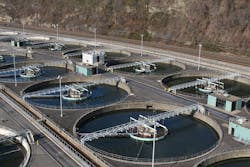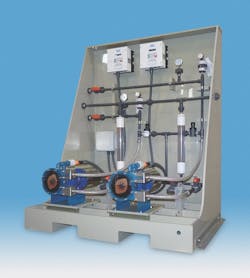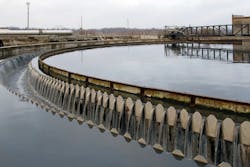The Rugged Pump Design for Challenging Oil & Gas Applications
About the author:
Sebastien Brosse is Team Leader Abaque and can be reached at [email protected]. Abaque is a product brand of PSG, a Dover company, Oakbrook Terrace, Illinois, USA. Abaque pumps are manufactured at PSG’s Auxerre, France, facility and supported through its Mouvex Americas facility in Grand Terrace, California, USA. For more information on Abaque’s full line of peristaltic (hose) pumps, please go to psgdover.com.
The oil & gas production industry is one of the most complicated operational environments.
To meet the demands of this tough application, liquid-handling duties must be performed with near flawless – and simultaneous – reliability. With little room for error, a reliance on the right equipment is paramount.
This is where peristaltic (hose) pumps answer the challenge.
Designed for Multi-Liquid Transfer
Peristaltic pumps are heavy-duty, self-priming and dry-run capable with a seal-less design. Only the hose itself contacts the fluid being pumped, and with no moving parts to become clogged or damaged, flow rates and volumes remain high.
The pump casing is lubricated to cool the pump and extend the lifetime of the shoes, which help move the product through the hose when squeezed by the rotors. This also enables the pump to handle numerous types of liquids from thin to viscous, abrasive and corrosive, and with or without particle saturation.
That range of fluid allowances, along with a design which eliminates the danger of leak paths and cross-contamination points – both crucial considerations in oil and gas liquid-transfer – make these pumps ideal for this application.
The Solution for Oil & Gas Fluid Transfer
Because of the harsh operating atmosphere in oil & gas production, a multitude of equipment, fuel and other resources are required to execute an efficient operation.
In the U.S. and Canada for example, fracking is a common method for shale oil and natural gas production. In this process, thousands of gallons of water are flushed down the wellbore, delivering the chemicals and frac sand required to open the reservoir and propel the trapped oil and gas to up the wellhead on the surface. Depending on the localized geology of the well, that oil and gas will contain varying viscosities and particulate levels.
Once the oil & gas are collected, the water must also return to the surface to be recycled or discarded. At this stage, the water may be particle-laden, thus requiring a pump that can efficiently transfer a large quantity of fluid in various consistencies.
Ultimately, this means the oilfield operation must deploy pumps that can accomplish three key tasks:
- Pump large quantities of liquids in multiple viscosities and particulate levels
- Handle the significant pressures required to execute safe operation
- Produce efficient flow rates in large volumes
Peristaltic pumps check all those boxes. The advanced design, rugged construction and dependable operation make this pump ideal for the challenging liquid-handling tasks of oil & gas production.


